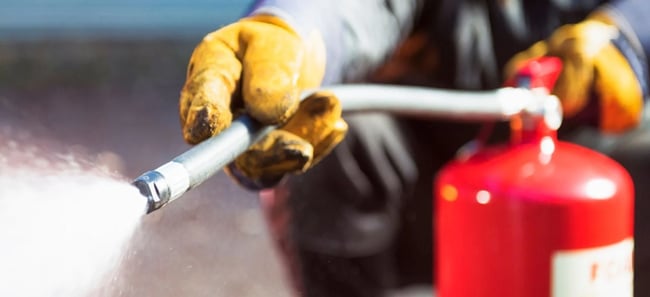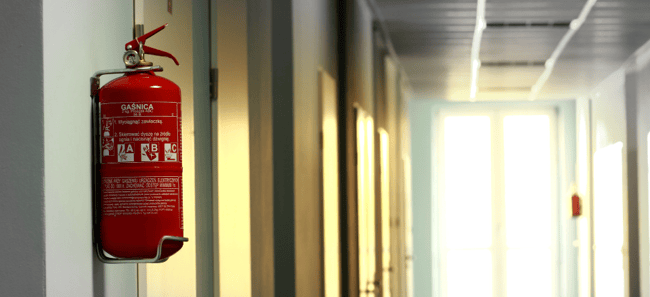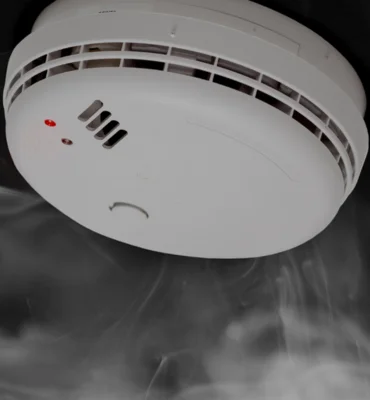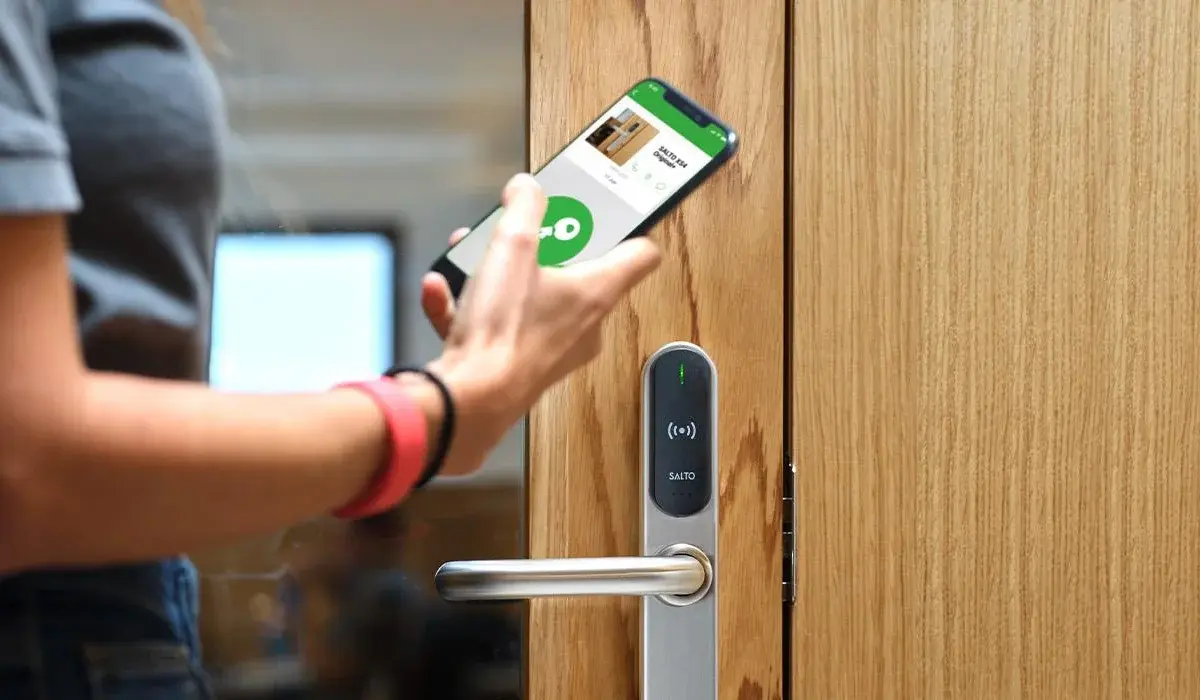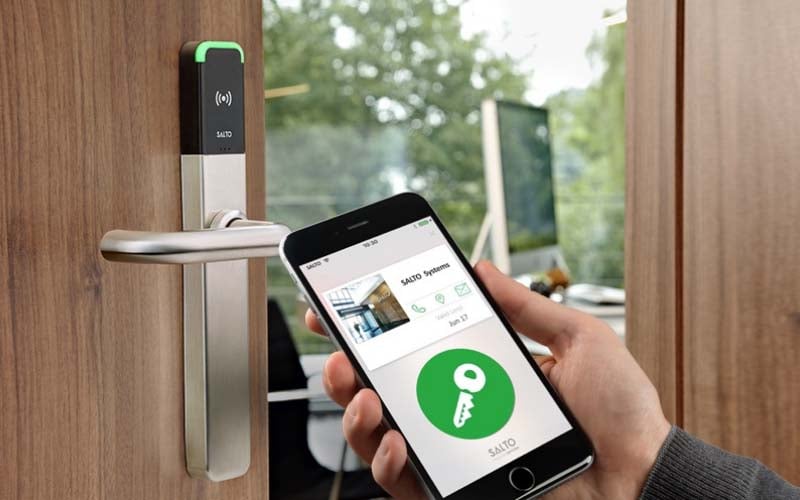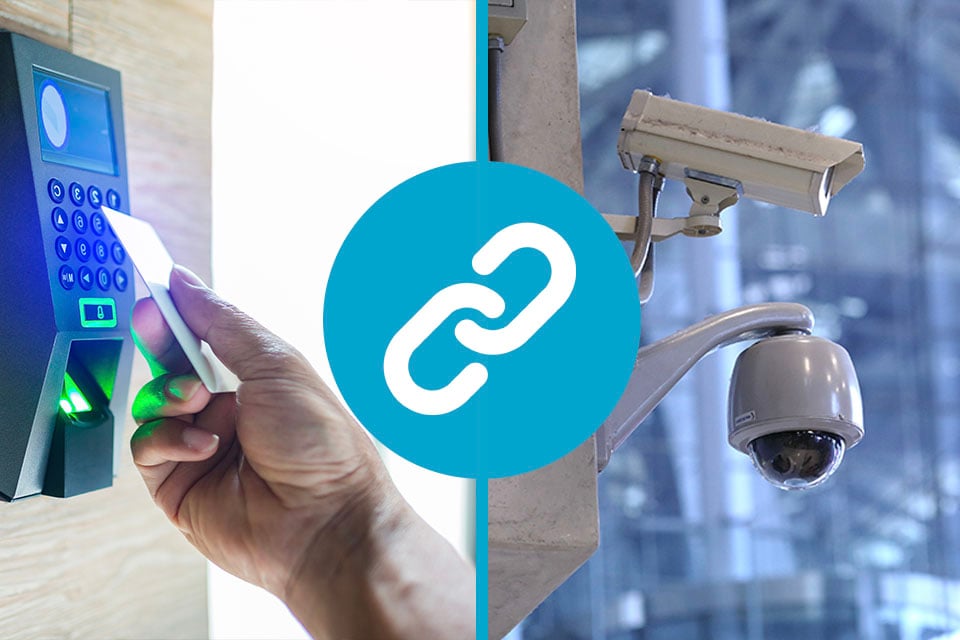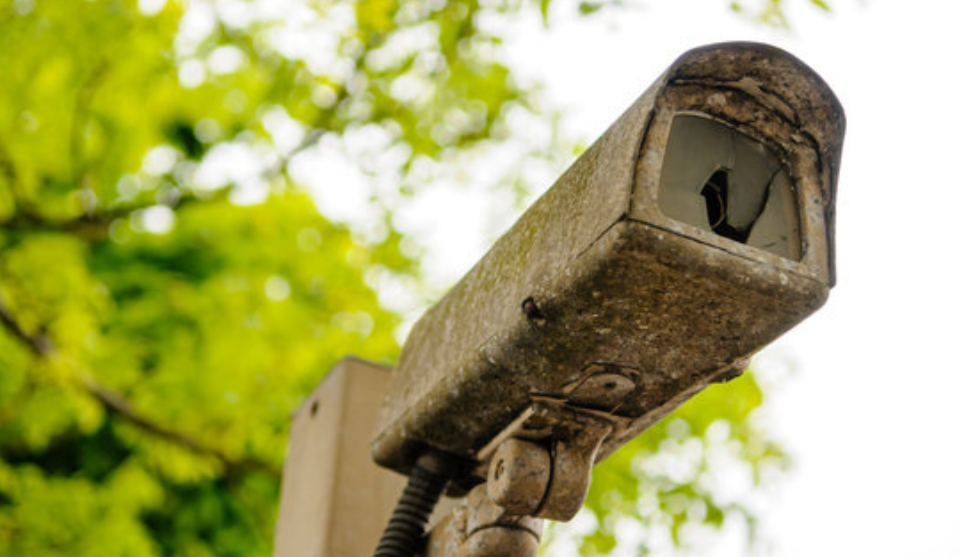There’s lots to consider when looking to install or upgrade a fire alarm system. In order to make things a little easier, and to simplify the information that’s out there, in this blog we talk about the categories, types of alarm system, and detectors available. With this detail, you can make a more informed decision for your workplace or educational establishment.
Jump To

Types of Fire Alarm System
At the broadest level, fire alarms fall into two main groups:
- Conventional fire alarm systems
- Addressable fire alarm systems
All types of fire alarm will fall into one or both of these groups (some names for these systems actually describe the technologies they use that aren’t specific to either group).
Both will have alarm points, smoke detectors, and a control panel that will give an indication of the location of a fire, if one is detected.
There are also open and closed protocol fire alarm systems. These aren’t separate categories from the two types above, and are instead different approaches to how the various components communicate with each other, as well as external devices.
Conventional Fire Alarm Systems
The various detectors and alarm points are connected to the central control panel in series, and the property will be broken down into zones. If an alarm is triggered, the fire alarm panel will indicate the zone that the alarm has come from, allowing you to investigate the area, and - if possible - extinguish the flames.- Pros:
- Viewed as a very reliable type of system.
- Cheap to install, especially for smaller sites.
- Cons:
- More expensive for larger premises to install
- The fire alarm control panel doesn’t show which detector has been activated, only that one detector in a “zone” has been.
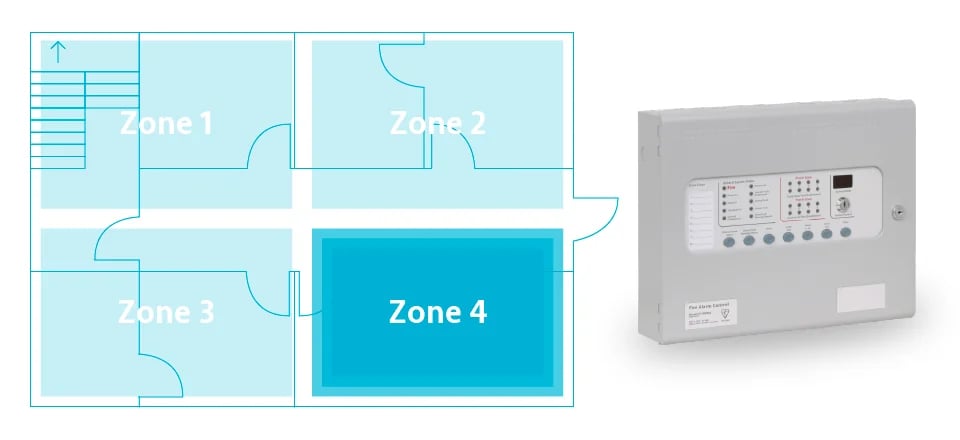
Addressable Fire Alarm Systems
Rather than breaking the site into zones, each detector and fire point is given its own address. If any one is triggered, the panel will relay its exact location, so you know precisely where the problem is.
- Pros:
- Ideal for larger sites, where “zones” of a conventional system would be far too large for a fire to be found quickly following an alarm.
- Allows for much faster response times, as anyone responding will know exactly where the conflagration is.
- Lower risk of false alarms, as malfunctioning detectors can be easily isolated.
- Quicker to install for larger systems as ~100 devices can be installed on a single fire alarm cable from the control panel.
- For some systems detectors can be programmed for their specific locations, so ones in dustier/steamier environments can be made less prone to false alarms.
- Detectors will report to the control panel if they are getting dirty and so less reliable at detecting fires.
- By having each fire point and detector individually assigned, more information about why the alarm was triggered is provided. Rather than simply telling you that a detector was triggered in a zone, an addressable alarm will tell you whether it was a smoke or heat alarm or a user activated call point.
- Addressable systems can interface with sprinklers, fume cupboards, fire dampers, smoke extractors etc. This is the fire protection system required for larger buildings.
- Cons:
- Complex, and will need an expert to ensure that they are installed correctly.
- More expensive than conventional options, both in terms of initial investment and ongoing maintenance costs.
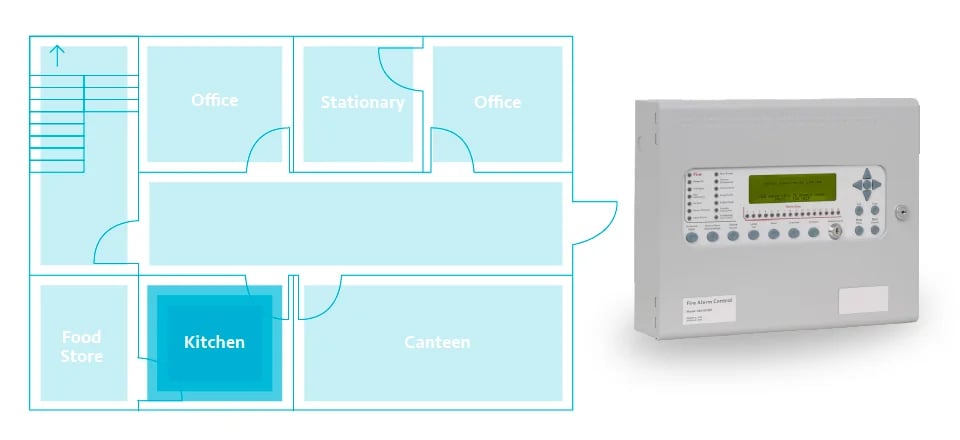
Analogue Addressable Fire Alarm Systems
A variation on an addressable fire alarm, analogue addressable systems have multiple devices connected on loop circuits. Each device on a loop will have a unique analogue value assigned to it, so it can be identified individually.
Rather than a binary “on” or “off” for each alarm device, these use analogue values, allowing for more nuanced detection of the various parameters they’re monitoring (e.g. smoke density, heat levels, etc.), which allows for more sophisticated analysis. This makes it easier to understand trends and changes in the environment and provides information on the conditions before an alarm is triggered.
Loop circuits as opposed to individual wiring, as well as simpler devices makes these systems cheaper than standard addressable ones.
Easier to set up and require less customisation and programming than addressable systems.

Other Types
Wireless Fire Alarm Systems
- Use radio frequency technology instead of wires to transmit their signals.
- Signal strength is preserved by the use of multiple frequencies, so it won’t be fully blocked or greatly weakened by structures in the way.
- Pros:
- With no wires needing to be fed through walls or ceilings, this setup is ideal for listed or heritage properties.
- Lack of wires also makes rearranging and scaling easier. Detectors can be moved to anywhere in a room, and all that’s needed to expand the coverage is extra detectors.
- Cons:
- Due to the wireless technology used, these systems are more expensive than wired alternatives.
- Require a mains power supply or batteries to be changed regularly to maintain full function.

Networked Fire Alarm Systems
- Also not limited to being either a conventional or addressable system.
- Has multiple control panels that can be viewed from one central location. This allows for monitoring of multiple buildings within your site and simplifies control over larger, more complicated environments.
- Often found in the largest and most demanding premises.
- Pros:
- Easily integrated with notification systems to deliver evacuation announcements, as well as logging false alarms, maintenance visits and upgrades.
- Highly durable.
- Perfect for multi-site businesses or large buildings.
- Cons:
- Complex, requiring set up by a fully-accredited, expert installer to get the most out of it.

Fire Alarm System Categories
Commercial fire alarms in the UK are split into three main types according to their aims and the components they use.
These categories aren’t definitive international or British standards, but serve as a framework to understand the different levels of complexity and function served by these setups, as well as where they are best utilised.
M (Manual) Fire Alarm Systems
- The simplest type.
- Consists of manually operated call points or pull stations.
- Rely on human intervention to initiate the alarm and do not have automatic fire detection capabilities.
- Commonly found in small buildings or sites where occupants can easily identify and report an incident.

P (Property) Fire Alarm Systems
- Designed to protect buildings and property as their principal focus.
- Aim to provide the earliest possible warning, alerting the fire service rapidly, so property damage can be minimised.
- No manual alarms, instead rely on devices such as smoke, heat and flame detectors.
- Commonly used in areas where there is little human activity, but there is still a risk of a blaze starting. Examples of these spaces include plant rooms, server rooms and storage areas.
- Split into two subcategories, P1 and P2.
P1
- Focus on protecting the entire building and giving the earliest possible warning of a fire.
- Detectors are placed in all areas and rooms of the building so the fire brigade will be alerted as soon as possible.
- Type of detector used in each room, as well as its location, will be decided by a fire risk assessment. This assessment will identify the specific risks present in each room, to determine the most appropriate detector for that space.

P2
- A cheaper version of a P1.
- Detectors are only placed in rooms deemed to be at higher risk of a fire starting.
- More cost-effective than a P1, but there is always a risk of ignition in an unexpected location. This can lead to the fire being detected far later than it would be by a P1.
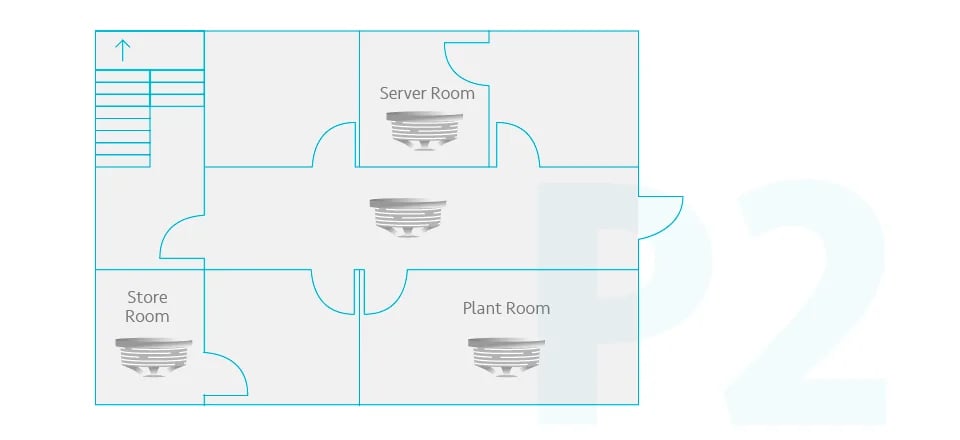
L (Life) Fire Alarm Systems
- The most comprehensive and sophisticated category.
- Include all the features of M and P systems, and are focused on protecting human life.
- Use both manual call points and automatic detectors to activate their alarms.
- Commonly used in large, complex buildings such as hospitals, schools, shopping centres, or high-rise buildings where the protection of occupants is of paramount importance.
- Also broken down into subcategories, from L1-L5. L1 is the most protective, with others less so. However, L2-5 are each focused on specific uses, rather than increasingly less protective.
L1
- Provide the most comprehensive coverage, with automatic fire detection throughout the entire building, including all rooms, corridors and enclosed spaces.
- Designed to ensure early detection and fire alarm activation, so evacuation and fire suppression can be as fast as possible and response time is minimised.
- Typically installed in high-risk premises, or buildings with complex layouts.
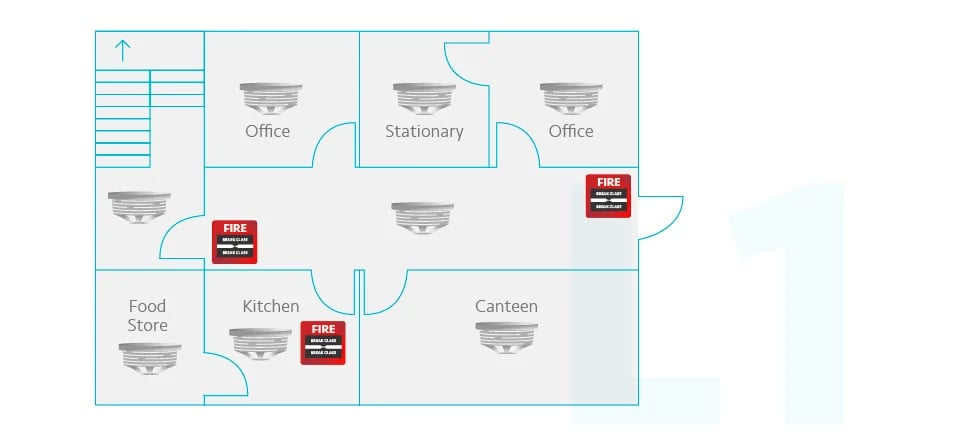
L2
- Cover escape routes, such as corridors, common areas, and specific high-risk zones. L2 systems provide automatic fire detection in these designated areas.
- Commonly used in smaller or less complex buildings compared to L1 systems, such as medium-sized buildings or premises with a lower fire risk profile.
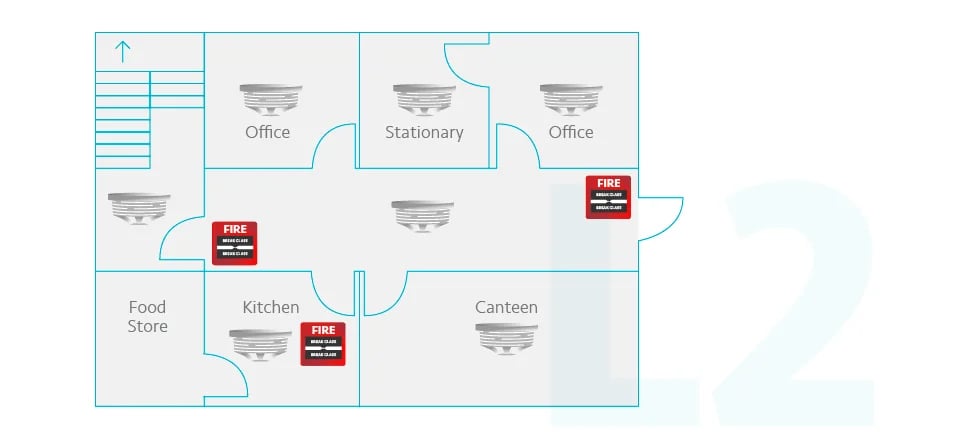
L3
- A more limited form of coverage, focusing on specific areas of high fire risk.
- Typically include automatic detection in high-risk zones or areas of particular concern, such as server rooms, kitchens, or electrical equipment rooms.
- Often employed in small buildings or areas where the risk is concentrated in specific locations.
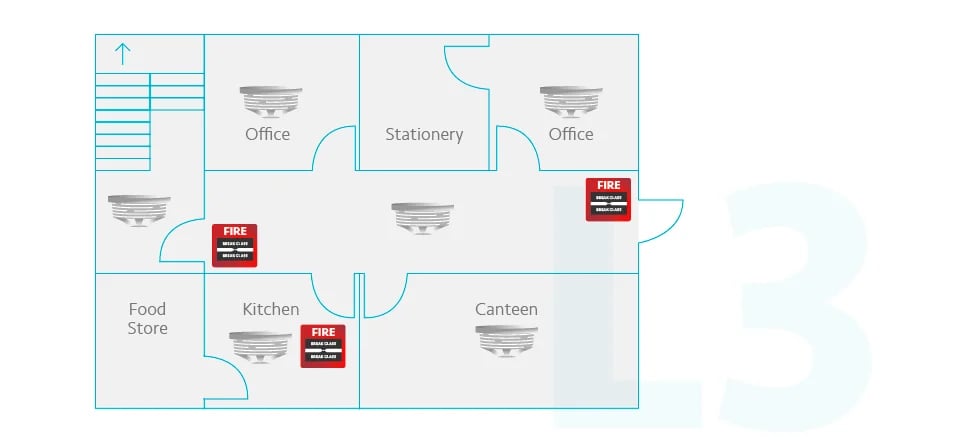
L4
- Provide a basic level of coverage, typically including automatic detection in escape routes, such as corridors, stairwells, or similar areas.
- Aim to provide early warning in critical escape routes to facilitate safe evacuation.
- Typically used in small buildings or areas with low fire risk.
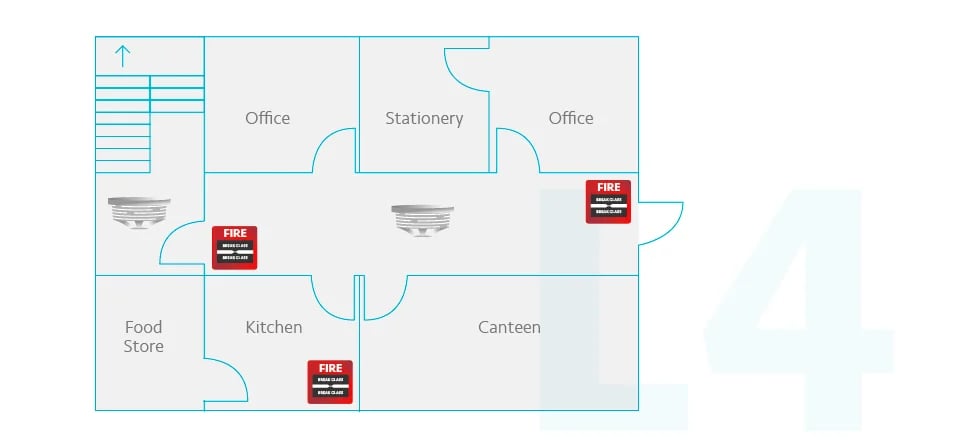
L5
- Provide automatic fire detection in common areas and high-risk zones specific to the occupancy (e.g. kitchens), ensuring early detection and warning in those areas.
- Designed for purpose-grouped accommodation, such as residential care homes or student dormitories.
- An “engineered” solution, intended to work in conjunction with other systems such as smoke extractors and sprinkler systems.
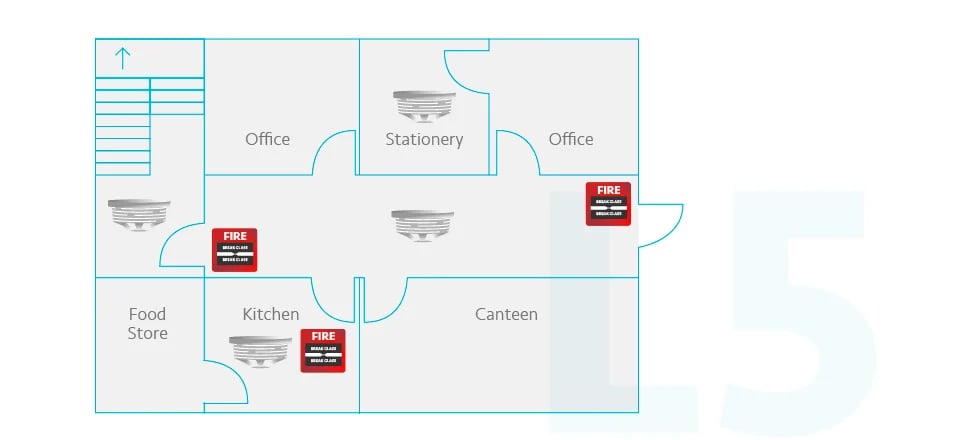
Types of Fire Detector
Fire detectors are devices that sense one or more of the products of combustion, such as smoke, heat and gas.
There are three main types of detector used today - Photoelectric, Heat and Multisensor Detectors.
Photoelectric (Optical) Smoke Alarms
Contains a light source, a lens and a photoelectric receiver and can work in two different ways:
-
-
- The light source is directed at the receiver, and smoke particles entering the chamber will reduce the light intensity, triggering the alarm.
- The light source is not directed at the receiver, but smoke particles will scatter the light, causing some of it to hit the receiver, which triggers the alarm.
-
- Pros:
- Can detect smouldering fires quickly, due to the increased size of the smoke particles produced.
- Fewer false alarms due to cooking fumes, steam, etc.
- Cons:
- Less sensitive to fast-burning fires that produce smaller smoke particles.
- Sensitive to dust and insects that can block/scatter light in the sensing chambers, causing false alarms/reducing the effectiveness of the sensor.
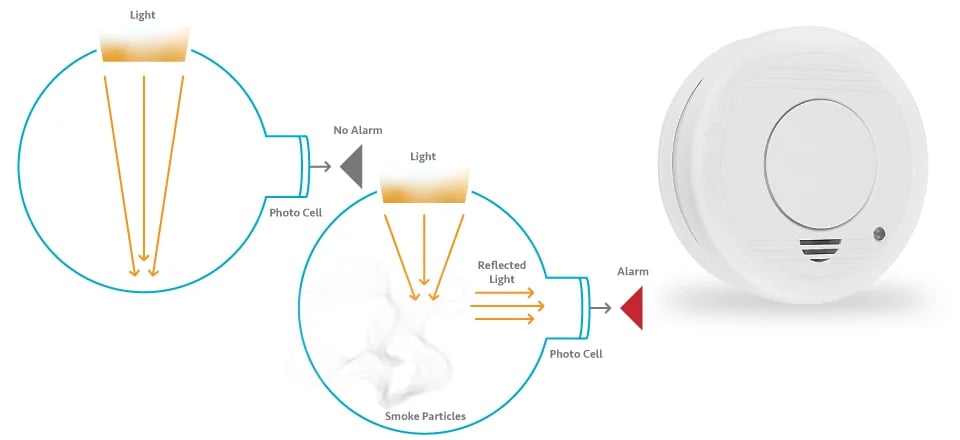
Heat Detectors
- Designed to react to changes in temperature rather than smoke.
- Often used in areas where other small particles are present in the air, such as cooking fumes, steam and dust. Areas this might apply to include kitchens and workshops.
- Come in two main types - Fixed Temperature and Rate-of-Rise (ROR).
Fixed Temperature
Activate when the bimetallic strip inside reaches a temperature that causes it to bend and break the circuit (usually around 58°C).
- Pros:
- Reliable, as they will always activate when the temperature reaches a certain level.
- Simple, as they don’t rely on complex sensors or algorithms, making them easy to install and maintain.
- Cheap, due to their simplicity making them easy to manufacture.
- Cons:
- Thermal lag (the rate at which heat is transferred to the alloy) means the device will activate some time after the air temperature surrounding it has hit 58°C. This limits the time available to respond and/or evacuate.
- The lack of rate-of-rise detection also means that a rapid temperature increase will go unnoticed until the temperature exceeds the alloy’s melting point.
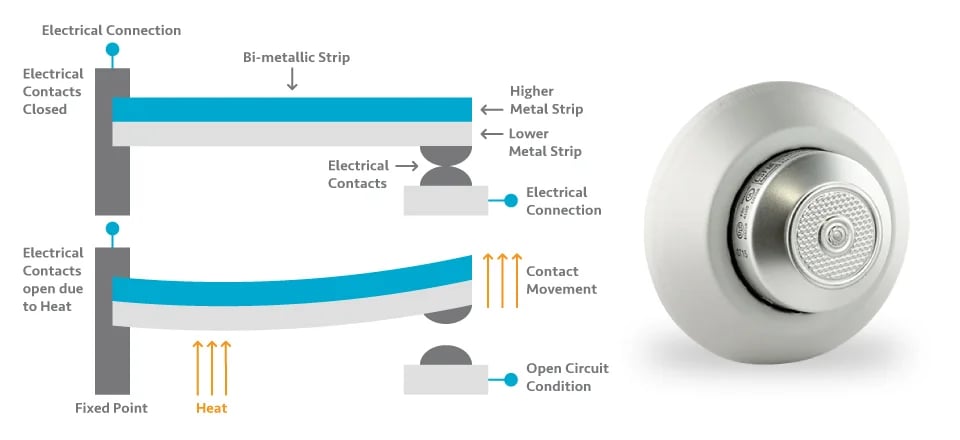
Rate-of-Rise
Activate when the element inside them increases in temperature by a certain rate in the span of a minute, regardless of the starting temperature. This rate is usually between 6.7° and 8.3°C.
- Pros:
- Rapid response to changes in temperature.
- Can detect a rapidly developing fire before the ambient temperature hits a pre-set level, giving you more time to respond.
- Cons:
- Greater chance of false alarms caused by temperature changes caused by heating or ventilation, or environmental changes.
- More expensive than fixed temperature detectors, due to the additional technology involved.
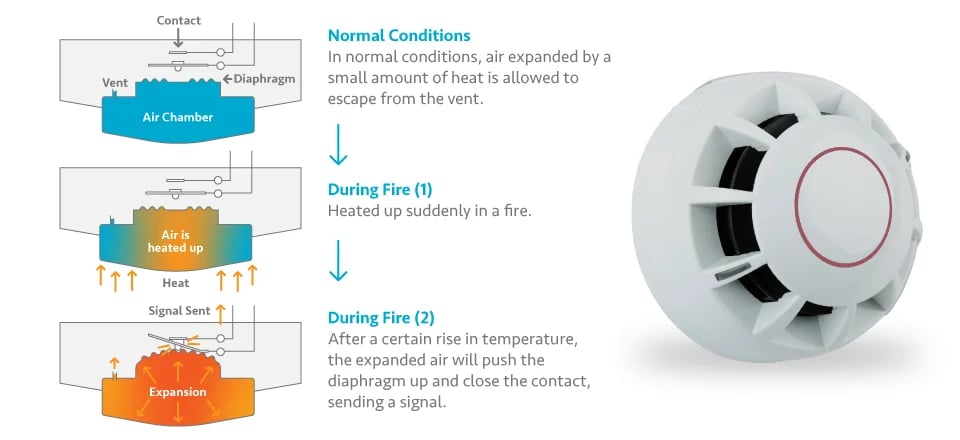
Multisensor (Heat & Photoelectric) Alarms
Uses both photoelectric and heat technologies.
- Pros:
- Good at detecting both fast- and slow-burning fires.
- Fewer false alarms due to the complementary nature of heat and photoelectric technologies.
- Comply with many fire safety regulators recommendations.
- Cons:
- More expensive than either single-technology detector type.
- Require more maintenance than either photoelectric or ionisation detectors.
- Sensitive to the same environmental factors as both standard detector types, leading to false alarms.
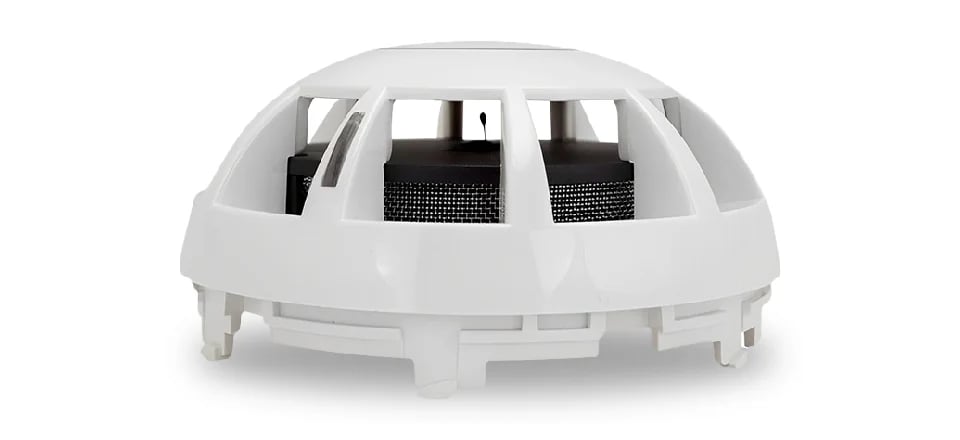
Other Types of Fire Detector
Outside these three main types of fire detector, there are others that are used either in more sophisticated systems, or in more specific locations.
VESDA (Very Early Smoke Detection Apparatus)
- An advanced smoke detection technology.
- Employs air sampling and laser-based detection techniques to provide highly sensitive and reliable smoke detection.
- Works by continuously drawing air samples through a selection of pipes in the protected area.
- Air samples are analysed in real time using laser-based technology to detect even the smallest particles of smoke or combustion products
- Pros:
-
VESDAs detect smoke at incredibly early stages, sometimes well before flames are even visible, allowing for rapid response and intervention.
-
Highly sensitive to smoke particles, even at very low concentrations.
-
VESDAs monitor continuously, ensuring any smoke or fire-related incident is detected promptly.
-
VESDAs often incorporate pre-alarm features that provide an early warning of potential fire conditions, allowing for proactive measures to be taken. This also means that notifications can be given before any alarm is triggered.
-
Tailorable to fit a wide range of environments and applications, including multiple sampling points and extensive coverage.
-
Can be practically invisible once installed, so there’s no disruption of aesthetics as there would be with a standard smoke or heat detector.
-
- Cons:
- Expensive when compared to traditional solutions.
- Complex, requiring professional installation, calibration and maintenance.
- Dependent on airflow, so if that is disrupted, the VESDA will be less effective.
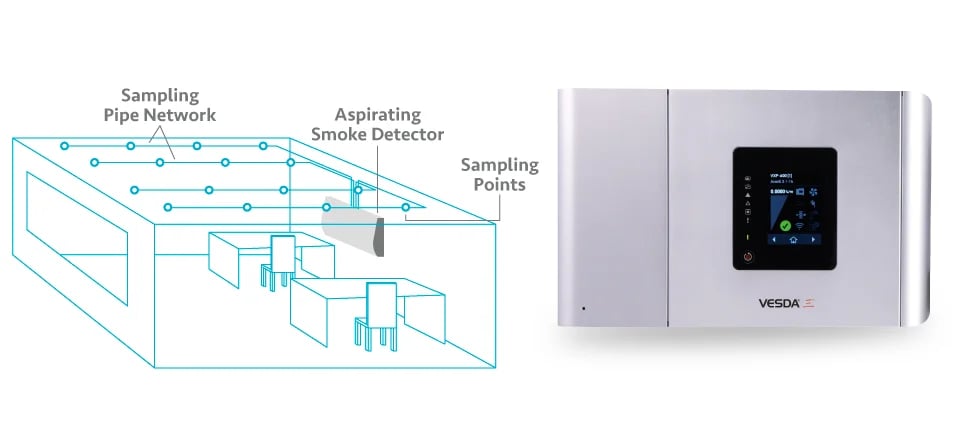
Carbon Monoxide Detector
- Detects carbon monoxide, a byproduct of incomplete combustion, which is virtually undetectable by humans, while also potentially lethal.
- Contains a chemical that changes colour when exposed to carbon monoxide. The colour change is detected and measured by a light sensor. This value is then converted into a reading.
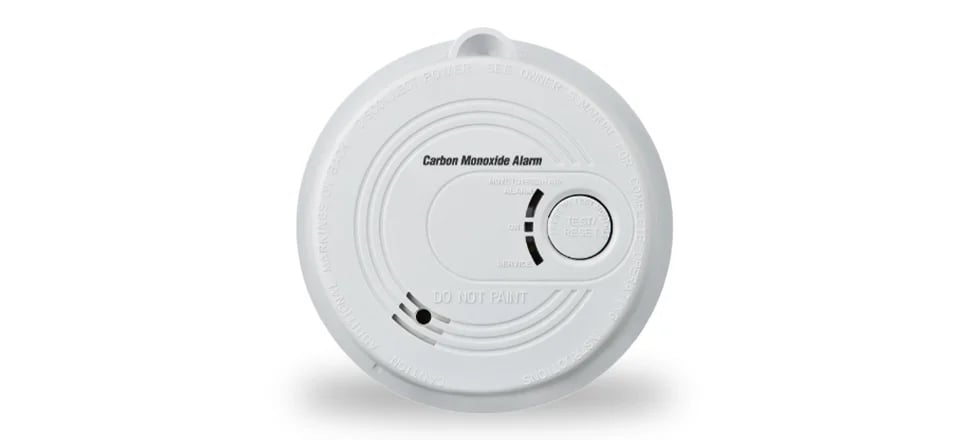
Intrinsically Safe Detectors
- An intrinsically safe detector is one that is designed to operate safely in hazardous environments where a spark, electrical arc or excessive heat could set off flammable gases or vapour.

Final Thoughts
As you can see, there is a lot that goes into designing a fire alarm system, and many factors to consider. The nature of your site, the level of occupancy, the age of your building, and even the heating setup it uses will all play a part in determining the right one for you. This is why it’s crucial to get a fire risk assessment before designing a fire alarm solution.
One thing that is for sure is that if you want to be getting the most out of your system, you should have it designed and installed and maintained by an expert.
At Chris Lewis, we have been creating bespoke and comprehensive fire alarms for homes, schools and businesses throughout the UK for over 30 years. From our founding, we have resolved to only use the most cutting edge technology available, as the safety and security of our clients has always been our top priority.
If you are looking to install a new fire alarm or upgrade an existing one, we are here to help.
Let us bring your new system to life, get in touch with our experts today:
Submit the form below and we will reach out to you shortly.

Luke Lewis-Rippington
Related Posts
Fire Alarm Monitoring: The Benefits and Costs
Fire brigade callouts rose by over 11% last year, to the highest number in a decade, with UK Fire Services called out over 700,000 times. It seems like - after a fall during the pandemic - building.
The Types of Fire Extinguisher and How to Use Them
Fire extinguishers are a crucial piece of fire safety equipment. They can be the difference between a small fire that is nipped in the bud, and one that quickly spreads out of control, causing huge.
Fire Safety in Schools: Your Responsibilities
Despite routine fire drills and regular testing, school fires still happen - and they can be fatal. Last year alone, uncontrolled building fires caused approximately 272 fatalities in the UK, many of.


